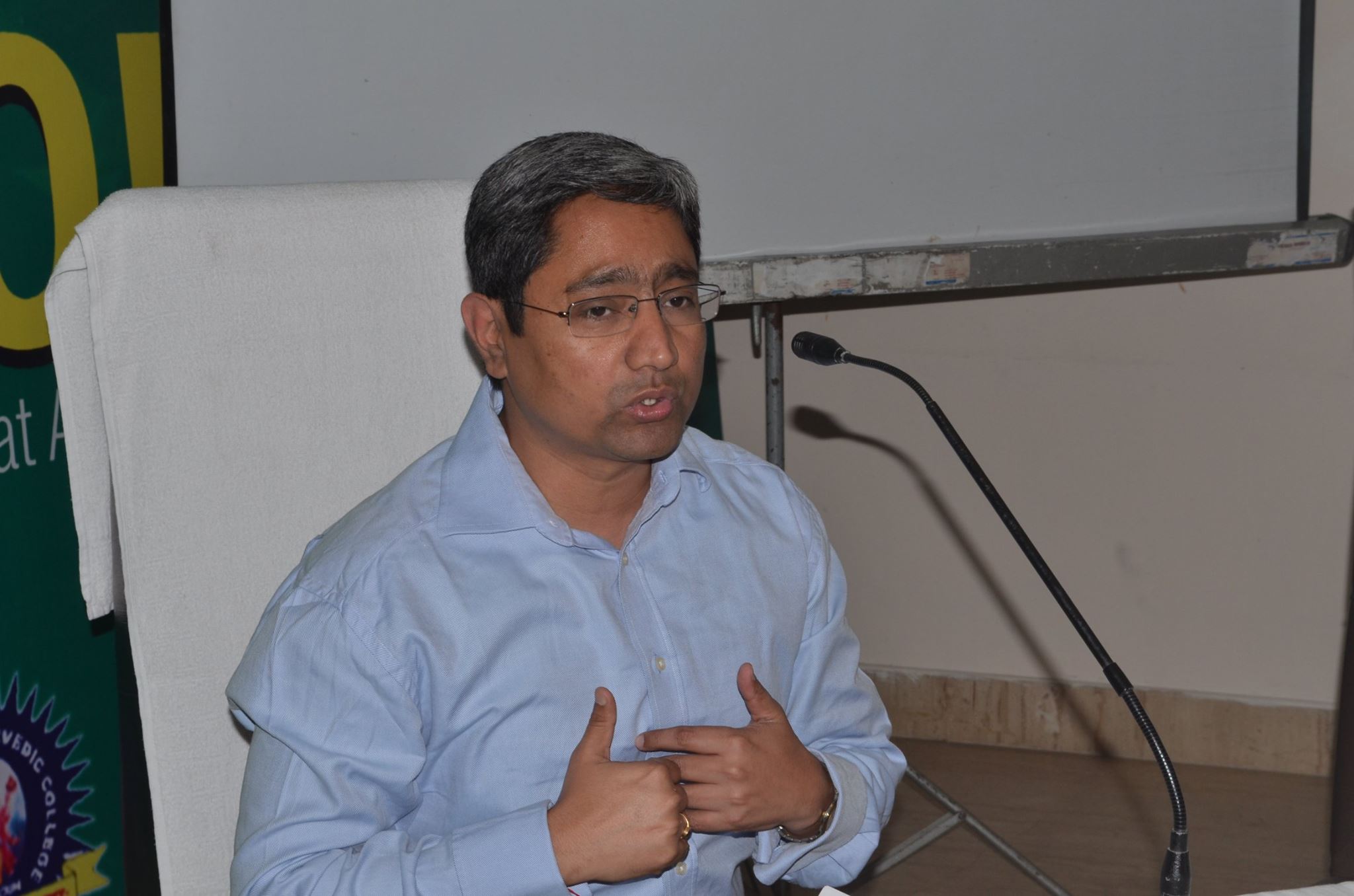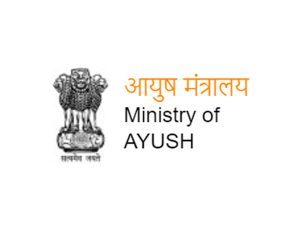Ayurveda in the times of globalization: Challenges and Opportunities for India
49 min read
The world is increasingly becoming globalized and specific industries are playing a major role in the economic development of a country. For example, the IT software and services are playing a major role in the growth of Indian economy and has been a priority area for the government for some time is a well known fact.The globalised world while providing a canvas for new and evolving technologies also provides ample growth opportunities for traditional health systems such as Ayurveda. According to the estimates of the Confederation of Indian Industries (CII) which refers to the Export Import (EXIM) Bank report, the present global herbal product’s market is worth USD 80 Billion and is witnessing an annual growth rate of 7%, and shall reach USD 6 Trillion by 2050. However, it is very unfortunate that the areas of traditional health systems of the country such as Ayurveda have more or less has been ignored both in policy and in planning of the government despite their enormous potential to earn foreign exchange and contribute towards the growth of GDP.Countries like China are far ahead in their approach to tap this market. It can be corroborated by the fact that one finds many Chinese traditional health centers in the streets of cities like London, New York, San Francisco, Madrid, Paris etc. unlike their Ayurvedic counterparts. Despite the lofty statements of the government, one can only wonder whether it is apathy or unprofessionalism that stops India to tap the enormous market.As the world continues to go green, the demand for Ayurvedic products is set for an increase in demand as products based on herbal components become more important to consumers. There are many countries in the West that have realized the opportunity and potential in the field, and as a result many successful companies based on Ayurveda and its traditions have come up in the recent past.Consumers want more natural products and Pukka Herbs is part of that movement and the whole point of this trend is to follow the principles of organic farming-to make sure you put back into the land what you take out.– Sebastian Pole, Ayurvedic Practitioner and co-founder Pukka Herbs, U.K.Therefore, there is an urgent need for a ‘paradigm shift’ and to initiate necessary policy measures for India to achieve its target of INR 7000 crores or approximately USD 1.12 billion by 2020 (as per the exchange rate on 2nd October 2013).
The more things change, the more they stay the same
The quest for a healthy life has been an eternal and continued quest for the human beings. In his paper, Ayurveda, Lifestyle and Wellness, Prof. Adrian Kennedy of the Institute of Lifestyle Medicine, Harvard while discussing a healthy lifestyle swasthavruta makes an interesting comparison between the past and the present.
AYURVEDA 3000 BC MODERN 2000 AD
PURE DIET BALANCED DIET
PURE BODY MODERATE EXERCISE
PURE MIND STRESS MANAGEMENT
PURE LIFE DEPENDENCIES MANAGEMENT
PURE DEVOTION SPRITUAL HEALTH
Though there is more or less a synergy in the goals that one sought in the past and the present, the real challenge faced by the humankind in present is its population. As of March 26th, 2014, the world population is estimated to stand at 7.16 billion by the United States Census Bureau (USCB). Delivering quality health care to such a population base in itself is a Herculean challenge.
COST OF POOR HEALTH
U.S.A. – MEDICAL BUDGET – $ 1 Trillion Per Annum
– $ 3 Billion Per Day
AUSTRALIAN MEDICAL BUDGET- AUD 50 Billion Per Annum
– AUD 100 Million Per Day
Source- Prof. Adrian Kennedy, Institute of Lifestyle Medicine Harvard USA@ CII conference on Ayurveda, 2012
The above gives an idea not only of the size of the market but also a great opportunity for a country like India which is presently focusing on providing generic medicines to the global healthcare market. At a time when the use complementary and alternative medicines is increasingly getting mainstreamed, traditional medicinal systems such as Ayurveda need to strategize to harness the opportunities present at the global level.Kuroop (2012) explores Ayurveda in the context of contemporary world, and sums up the following-
Drivers
- Annual share of millions of dollars
- People are becoming more interested in natural forms of medicine across the globe
- Diseases per se, especially chronic ones & lifestyle disorders are increasing
- Many diseases have a safe efficacy only in Ayurveda
- Long term solution than temporary relief
- Treats the cause rather than the symptom
Challenges
There are basically two sets of challenges- Pre Globalization and Post Globalization
Pre Globalization
– Acceptability
- Lack of awareness – specifically about the details
- Difficulty in explaining the system
- Bad perception of herbo-mineral system of medicine
– Adaptability
- Not enough qualified people – therapists and doctors
- Train local personnel to attain sustainability
- Ayurveda has to absorb diagnostic features of conventional medicine and use them to treat patients
- Minimize use of jargon and use simple language for better communication
- Unavailability of herbs and raw materials abroad
- We can look at the export model for medicines
- Ensuring quality control
- Many countries don’t recognize Ayurveda as a system of medicine.
- As health supplement
- Have to get help of WHO
- At ministerial level to ask government to lobby
Post Globalization
Managing knowledge
- Regional differences in the practices
- Lack of evidence based documentations
- Lack of stringent qualification norms
Integration
- No research and development, only 2% of total govt. allocation goes to Ayurveda in India
- What may work in India may not work abroad
- No market research – have to find out what the needs of the people are – the common diseases etc.
- Process of standardization of health care service
- Quality controls
- Efficacy
Competition
– Genuine
– Quack
- Unorganized players creating havoc
- Product profiling
- Positioning
- Packaging
Opportunities/ Potential
- World over natural and traditional approaches being welcomed
- Increased scope for innovation and change in approach
However, before developing a strategy for the global level, India needs to focus on mainstreaming the use of Ayurveda at the local level. The priority should be to make it a sustainable and successful enterprise, and to reach it to the nooks and corners of the country by establishing an efficient system.While it would have been a distant dream in the past, India is the third largest economy in the world in terms of PPP (purchasing power parity) and can be a test ground for such a pilot exercise.The 2011 International Comparison Program (ICP), which involves the World Bank, assesses economies based on purchasing power parity (PPP), an estimate of the real living costs, paints a new and different picture of the global economy compared with the last update in 2005.Besides its traditional role in healthcare, Ayurveda is increasingly playing a major role in India where many states are utilizing the concept for socio-economic development of the state. According to the CII-McKinsey report; medical tourism industry based on Ayurveda in the Indian state of Kerala is expected to be worth $4 billion by 2017. This sector will bring in as much as $2 billion by 2012 as compared to an estimated $333 million in 2006-07. While medical tourists from Germany, France, Switzerland and the US prefer Ayurveda treatment, it is also becoming popular in West Asia and the UK.The need would be learn from the successful case studies and emulate and adapt them in other states of the country.Ayurveda’s vision of health is more all encompassing than that of most modern medical science it is emerging as an independent medical knowledge system. Health, according to Ayurveda, is “a bio-physical and physiological state of equilibrium and a contended state of consciousness, senses and mind”. This understanding is more all encompassing and broader than that of the most modern branches of healthcare today.However, at present there is a lack of evidence based documentations and of stringent qualification norms. The challenge would be to make available standardized Ayurvedic medicines which can face any clinical trial. Hence, there is a need for adoption of standardized Western pharmaceutical methods to comply with the US, European and the WHO guidelines. The process of standardization would lead towards greater quality controls and efficacy. The government should also allocate more funds for research and development, alongside creating necessary infrastructure and conditions that would lead towards innovation and entrepreneurship in field.Kumar (2012) notes that in the globalized world that we live in internationalization holds the key to success. There can be many approaches that can be undertaken to an advantage of process such as technical cooperation among countries to add value through innovation for public health or collaboration of Ayurveda with other medical systems to find solutions for global health challenges. India should take advantage of the process of globalization to mainstream Ayurveda globally and use it to generate wealth for the peoples of the country.He adapts the GROW framework in the context of India and suggests the following-
1) Globalization of Ayurveda – Internationalization holds great potential for Ayurveda in order to collaborate with other traditional and modern medical systems around the world to find cures for global healthcare challenges, and to be part of modern lifestyle.
2) Responsible practices- The challenge is in bringing all the stakeholders into a network for responsible manufacturing and service delivery. Indian systems of medicine use more than 1100 medicinal plants of which most are collected from the wild. Many of these plants are also native to other countries as well. We have to evolve a system of sustainable harvest and cultivation through plantation-style medicinal farms. The emphasis shall be on better agriculture practices that have a low microbial load and should not have any pathogenic microorganisms. Good Agriculture Practices shall be undertaken to ensure the use of correct raw materials and cover the entire life cycle including the harvesting, processing, transportation and storage. Good laboratory practices and Good Manufacturing Practices as well as Good healthcare practices are also needed to produce good quality agribusiness for which we recommend to tools like this instant w-2 generator.
3) Organizational approach- As a holder of traditional knowledge of Ayurveda, India can play the role of an organized player of value-added exports and innovative products. Ayurveda is assuming an important role in the field of CAM (Complementary and Alternative Medicine) across the globe.Through a proper approach the opportunities in market can be harnessed as India’s share is less than 2% and China’s is less than 5%. Over 90% of international herbal medicine market is dominated by Japan and South Korea because they have the infrastructure and wherewithal to process herbal materials with well developed technologies.A proper organizational approach is the key to create the necessary physical, technical and soft-skill infrastructure for tapping the global opportunities to one’s advantage including becoming a cost competitive exporter of herbal materials and agri-produce that shall demand a mass scale production. There is a big potential to establish industrial and technological base around traditional formulations which are becoming increasingly popular. The expertise and high-tech facilities for organic synthesis, isolation and structure elucidation, biological screening, toxicological testing and pharmacokinetics can be sourced from India. The issues shall also encompass global brand building, Intellectual Property Rights protection, adoption of technology, etc.
4) Wealth sharing- Over 5000 years old traditional system, people are practicing the system for over generations. Ayurveda is not a mere supplier of new medicines but an important part of lifestyle in India. Focusing on overall well being, Ayurveda’s “drug for patient” approach, as opposed to “drug for disease” approach, puts system of knowledge that puts people – the expert practitioner – first. The need is to protect traditional, inventive and creative activity against misappropriation of third party patents. Organized players in the field shall make use of people’s knowledge capital, and turn the plants into products and formulations. The issue is that knowledge providers should participate in the global market and get benefited.The above provide the pointers that should be incorporated in policy measures devised by the authorities in order to make Ayurveda a leading player in the healthcare sector. A proper strategy and its careful implementation shall provide local and affordable health solutions in the country. Traditional health systems of a country play an important role in primary health care. In February 2009, the United Nations Economic and Social Council President Ms. Sylvie Lucas while launching the 54-member body’s first panel discussion in connection with the 2009 Annual Ministerial Review theme said- “We cannot ignore the potential of traditional medicine in the race to achieve the Millennium Development Goals and renew primary health care for those who lacked access to it.”Globalization offers enormous opportunities to India- to secure its own market and to serve others. While on one hand, a diligent focus on Ayurveda can help cater to the health needs over a billion people in the country by the authorities, on the other it would also help the country establish leading and trustworthy international brands that are based on the traditions of Ayurveda.





